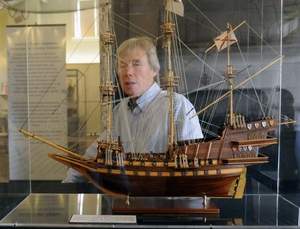
Dr. Sam Turner, LAMP’s Director of Archaeology, has been writing a recurring series of articles for the St. Augustine Record regarding Ponce de Leon’s voyage of discovery 500 years ago.
LAMP’s own Dr. Sam Turner continues his column in the Record, which has been picked up elsewhere across the state, on Ponce de Leon’s 1513 voyage of discovery. The most recent installment published Sunday highlight’s de Leon’s first sighting of the land he would name “La Florida.”
From the St. Augustine Record:
On Easter Sunday, March 27, 1513, land described as an island in the Herrera account was sighted to the west. This was the first sighting of the Florida coast. This first sighting is where many writers on the subject of the discovery of Florida err in their interpretation of Herrera. This stems from a simplistic approach to the text. Because the land is described as an “island,” many historians assume that it must be one of the numerous Bahamas Islands known to the Spanish as the Lucayan Islands. It was not until some years after 1513 that the Spanish themselves realized that Florida was part of a greater land mass. This 16th century misunderstanding of geography continues to confuse scholars to this day.
As noted previously, the Lucayan Islands had been scoured and largely depopulated by Spanish slavers who had also made a number of incursions into Florida for the same purpose by 1513. It is very unlikely therefore for any of the Lucayan Islands to have been unknown and un-plundered of their inhabitants by Spanish slavers. The unidentified island sighted March 27 was the east coast of Florida.
Read the entire article here.
Read the first installment of Sam’s series, 20 January 2013, here.
Read the second installment, 03 February 2013, here.
Read the third installment, 17 February 2013, here.
Read the fourth installment, 03 March 2013, here.
Read the fifth installment, 17 March 2013, here.

